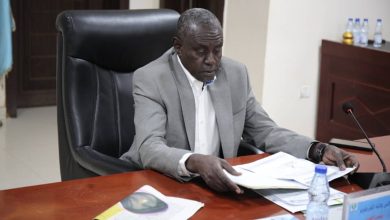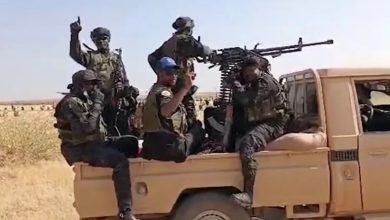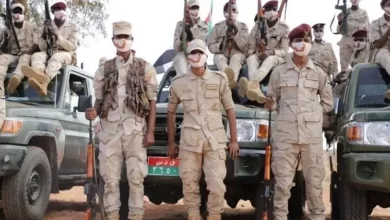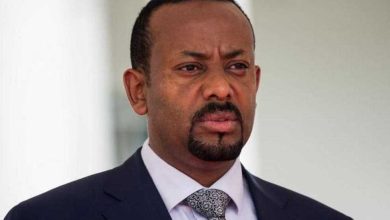Fighting in Sudan, Who is Behind The Conflict?
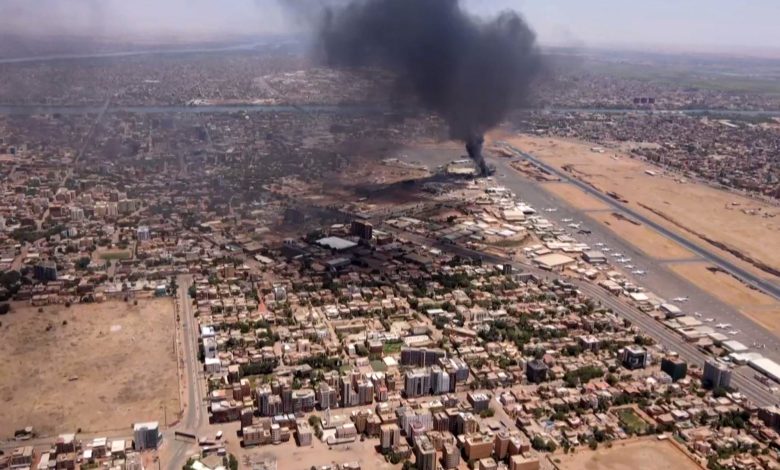
Agencies – Sudan Events
Arming of the Rapid Support Forces( RSF),
led by Mohamed Hamdan Daglo “Hemedti,” began after the adoption of the law in 2017,which granted them the status of an independent security force, after which huge deals were concluded to import weapons from Eastern Europe and some European and American weapons under the cover of intermediaries in the black market for weapons.
The RSF received batches of “bilateral and quadruple” antibiotics in November and December 2021, according to a member of the Sudanese army’s military intelligence who spoke to Sudan Tribune on condition of anonymity.
Reports indicate that the RSF has about 10,000 four-wheel-drive vehicles, some of which are armored and equipped with light and medium machine guns. Hemedti also announced in June 2022 that his forces possessed a BTR light armored unit.
Weapon Sources:
The army announced in previous times the destruction of weapons and ammunition stores for the RSF in various parts of Khartoum, and others that were on their way to the capital without specifying the destination from which they came.
The “RSF ” trained dozens of soldiers to use artillery weapons in a new weapons course during the past July and August, after the chances of storming the army’s fortified military camps and units in Khartoum, such as the General Command, the Armored Corps, and the Corps of Engineers, declined.
Several parades held by the RSF on special occasions revealed that they possess armored vehicles, artillery, shields, anti-aircraft guns, and weapons.
The forces received batches of twin ZU-23 23 mm anti-aircraft guns and ZSU-23-4.
23- mm “duo and quadrilateral” in November and December 2021 from Russian sources, according to the intelligence element, in addition to purchasing headquarters and concluding rental deals for a number of buildings in the capital, which the element doubted were weapons warehouses currently located in Khartoum.
The RSF launched a simultaneous attack on military headquarters of a military-industrial nature, especially the Yarmouk complex, in early June, in order to obtain ammunition and various types of weapons and increase their percentage of armament and possession of weapons.
Retired Colonel Abdel Moneim Ahmed confirmed to Sudan Tribune that the attacks carried out by the RSF during that period for the purpose of obtaining necessary military supplies after the loss of a large percentage of their ammunition.
He said that the attacks on the headquarters of the Central Reserve Forces and Yarmouk last June gave the “RSF ” everything it could hope for ,in order to obtain what it wanted, pointing out that the current attacks on ammunition and armored weapons clearly reveal the plans of those forces to obtain special weapons such as combat armor.
He noted that the Support Command followed a plan that may seem clear to the military by controlling armored vehicles and taking advantage of them to achieve special superiority on the ground, adding that it is noteworthy that the recent attacks in Darfur come in the context of arming.
He continued: “Perhaps, after controlling and obtaining the armored vehicles and securing all their places of control in the capital, these forces will resort to introducing unmanned aerial vehicles and may seek the help of mercenary pilots to carry out air strikes after taking control of many airports in Darfur recently.”
At the same time, he saw that the RSF took control of huge quantities of weapons and ammunition, especially Chinese and Russian multiple artillery weapons produced locally, and began using them extensively, as everyone is currently seeing in the capital from continuous bombing operations.
He confirmed that the RSF currently possess and use large 160 mm and 240 mm mortars, or high explosive HE shells.
An officer in the RSF – who requested that his name not be mentioned – said in an interview with Sudan Tribune that the Forces Command held training courses for soldiers on using mortars.
The mortar is known as a small artillery piece with a strong caliber for vertical strikes. It is one of the old firearms that is simple and of little complexity and is available in different calibers in the army.
The RSF officer said that their soldiers are using several 60 mm, 81 mm, and 120 mm mortars that they acquired from army stores and the Yarmouk factory.
He explained that the process of obtaining weapons from the United States or another country is not difficult, if not directly, but rather through intermediaries, as is happening now in many countries of the world.
The officer refused to continue talking about the RSF using of large 160 mm and 240 mm mortars, or high explosive HE shells, as retired army officer Abdel Moneim Ahmed pointed out to Sudan Tribune.
For a short time, the RSF used a Katyusha rocket launcher, “132 mm rocket caliber,” after acquiring it from army stores, but they have now stopped after the rockets ran out and they were unable to bring ammunition for the launchers.
The RSF tried to use a 130 mm howitzer, but failed to provide a crew to use it. This gun appeared in the hands of a soldier of RSF at the central market roundabout in Khartoum in a video clip, saying that it had seized it from the Sudanese army.
The RSF soldiers widely use the M16 rifle, and the Forces Command purchased hundreds of them 6 years ago through a huge deal worth about $25 million.
Combat Mechanisms:
During the period between last July and August, the RSF introduced new combat mechanisms through the western roads, according to an element affiliated with military intelligence.
The officer, who requested that his name be withheld, confirmed that “the army largely neutralized up to 80 percent of the supplies and weapons brought by the support forces from parties he refused to mention.”
What the intelligence element said matches what was confirmed by numerous statements of the armed forces, especially with their announcement of the destruction of combat vehicles of the RSF near the city of Bara in North Kordofan State on July 10, which were on their way to the RSF .
During that period, the “RSF ” introduced “Land Cruiser pickups,” known locally as the “Thatcher,” which are not affected by bullets from long distances and their price reaches about 70-80 thousand dollars. The second commander of the RSF , Abdul Rahim Dagalo, appeared with one of them in Nyala , South Darfur after seizing the army headquarters late last October.
The RSF took control of fuel and personnel tankers from military and commercial sites, and also transported hundreds of pieces of heavy machinery from private exhibitions and modified them to transport military equipment and soldiers.
Blurry marches:
Local drones are manufactured or modified at the Yarmouk Complex, a military complex located in Khartoum, which the Rapid Support Forces attacked in early June and declared control of.
The RSF received a limited set of marches from the forces of retired Libyan Major General Khalifa Haftar, and armored cars, according to the intelligence source, but RSF Commander Hemedti said in a previous audio recording that his forces obtained marches from army stores.
The RSF resorted to using drones armed with bombs, and some with missiles, during their attack on strategic sites, which enabled them to seize many places. They were recently seen in the battles of the army’s 16th Infantry Division, Nyala.
Reliable information from a former military official who spoke to Sudan Tribune indicated that the RSF were using a drone made in Serbia equipped with 120 mm mortar bombs, which appeared in the airspace of the capital last June, and attacked the General Command Corps and the Armored Corps.
The former army officer stated that the RSF during the current war used portable missiles and tried to bomb the Wadi Saydna air base, and according to his information, they received these missiles from the Russian Wagner base in Central Africa.
Multiple follow-ups and video clips broadcast by RSF members during last August indicated that they used missiles known as portable air defense systems to shoot down a fighter plane, but the source of those missiles was not known.
Last June, the army reported that it was shot down during an attack on the General Command headquarters. That drone carried thermal shells with a diameter of 120 mm, which use oxygen from the air surrounding them to generate an extremely hot explosion. Each shell weighs about 12 kilograms and has a destructive radius of 20 meters. It also didn’t happen confirm where it was made and when it was owned.
The RSF own armored cars manufactured in Europe, which they used to monitor illegal immigrants on the border with Libya and transported them to El Fasher and then Khartoum last April.
During the ongoing attack on the Armored Corps south of Khartoum, the Belarusian “Cayman” armored vehicle and models of the Sarsar 4 and Sarsar 5 armored vehicles, which were manufactured locally, appeared with the RSF , reflecting a new shift of forces in the arming process during the war.
According to retired officer Brig.Gen.Abdul Moneim, in his interview with Sudan Tribune, the RSF sought to use the VN4 armored vehicle, which is a Chinese armored vehicle, and the Type 96 tank, which are produced locally by the army through the defense industries system.
During the ongoing attack on the Armored Corps south of Khartoum, the Belarusian “Cayman” armored vehicle and models of the Sarsar 4 and Sarsar 5 armored vehicles, which were manufactured locally, appeared with the RSF , reflecting a new shift of forces in the arming process during the war.
According to retired officer Brig. Gen.Abdel Moneim, in his interview with Sudan Tribune, the RSF sought to use the VN4 armored vehicle, which is a Chinese armored vehicle, and the Type 96 tank, which are produced locally by the army through the defense industries system.
In a widely circulated video clip, one of the RSF in Khartoum appeared inside the structure of a building carrying the Chinese QLZ-87 grenade launcher, which is produced locally by the army, which suggests that the RSF acquired it from the former’s complexes and stores.
Arms Trade:
On September 7, 2023, the second commander of the RSF , Abdel Rahim Dagalo, denied in a television interview that any weapons from outside Sudan had reached his forces, and that his forces had obtained large quantities from the Sudanese army’s stores.
Abdel Rahim Dagalo said, “No weapons come to us from outside Sudan, and the whole world knows these details.”
He added, “We were not ready when the war started, because we were surprised by it… but God enabled us to receive all the remnants’ stores and some of the armed forces’ stores.”
Military expert Omar Arbab told Sudan Tribune that the arming process has now become a commercial process, especially when the arming is for militias or forces that are not affiliated with the government, and this is an issue that is more related to the market and the arms trade than to issues of politics and international relations.
He continued, saying: “In the end, they are conventional weapons, so obtaining them is not difficult. “It is not the S-100 or S4 missile system or Rafale aircraft, nor does it represent such submarines or internationally banned weapons.”
He believed that obtaining weapons was a normal and expected issue in light of the spread of arms dealers and crises.
Earlier, specifically August 11, 2023, the American newspaper “The Wall Street Journal” revealed in a report that the United Arab Emirates UAE provides military support to the Rapid Support Forces.
The newspaper said that an Emirati cargo plane landed at a Ugandan airport at the beginning of last June, and it was confirmed that it was carrying weapons and ammunition, at a time when official documents showed that the plane was carrying Emirati humanitarian aid to Sudanese refugees.
On the other hand, the UAE denied on August 14 that it was siding with either party in the war in Sudan, or that it had supplied weapons and ammunition to one of the parties in the war there.
The Emirati denial came after press reports that Abu Dhabi provided significant military support to the RSF , which have been fighting the Sudanese army since last April.
Director of the Strategic Communications Department at the UAE Foreign Ministry, Afraa Al Hameli, said in a statement that the UAE “does not take sides in the current conflict sweeping Sudan, and seeks to end the conflict, and we call for respect for Sudan’s sovereignty.”
What is most worrying to the remaining residents of the capital and a number of cities where battles are taking place between the two sides is the use of artillery and mortar shells that fall randomly on homes and roads, leading to the deaths of hundreds, according to sequences published by the parties to the conflict, as well as reports and statements by international organizations and service committees run by them. Activists in different neighborhoods.
